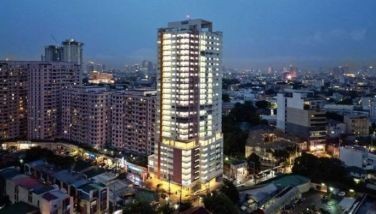A pay phone in every barangay
April 28, 2003 | 12:00am
Smart Communications Co. has been giving away Smartlink sim cards outside Metro Manila.
The program identifies existing subscribers in an area and encourages them to make his/her satellite phone available to his neighbor by converting his private phone to a public calling office or PCO. To push the business, Smart gives away sims.
"One PCO in Mindanao started in February and generated P49,000 for one unit in one month, " said public access department head Cristina Mariano.
Revenues come from two sources. The subscriber is given 15% of the total cost of the calls made through his unit. The PCO also becomes the seller of pre-paid cards, which come in denominations of P100, P300, P500, and P1,000.
"Smartlink phone as a livelihood program is a very profitable venture, especially because there is not a barangay in the Philippines that does not have a family with a member working abroad," said public affairs head Ramon Isberto.
Another advantage of a PCO located outside the barangay hall is its accessibility 24 hours a day.
There are currently 22,000 subscribers of Smartlink nationwide.
SmartLink is a mobile satellite phone with three components: an antenna, an ordinary landline telephone unit, and the SmartLink phone unit. Just like a GSM phone, Smartlink requires a sim card. It can be used as a fixed phone or a mobile phone attached to a car or a shipping vessel. For example, holders of Smartlink sims in a fishing vessel engaged in tuna fishing somewhere in the Pacific can make use of a Smartlink PCO.
"The system works like a pre-paid GSM phone, except that the user is charged both for outgoing and incoming calls," said Isberto.
Smartlink charges 35 cents a minute compared to the $2 to $5 per minute charged by other providers of satellite telecommunications. In pesos, that translates to P13 per minute during peak hours and P8 for non-peak hours for incoming and outgoing calls.
"Incoming calls are charged on the sim cardholder because each call is transmitted to a geosynchronized satellite which hovers above Asia with a footprint of about 15 million square miles. This is called a double hop, which means if a call is made from the Smartlink phone to a cellular phone, for instance, the call is transmitted to the satellite, which sends the signal to the cell site, if calling a cell phone, or to the terrestrial network, if calling a landline. The same setup works for incoming calls," said Mariano.
"Because the satellite covers the whole of Asia, there is not a square inch of the Philippines that cannot be connected via the Smartlink phone," said Isberto.
Launched in 2000 at the price of P15,000 per unit, Smartlink’s price was lowered last July to P4,990 to make it more affordable to its primary market–11,000 of the country’s 41,940 barangays which do not have electricity and which, therefore, do not have landline telephones and cell sites.
"Smart has 2,800 base stations that roughly correspond to one cellular site providing access to cellular signal to about 80% of the population. Through satellite, we can cover those areas where we can’t build cell sites," said Mariano.
Being studied is a link up with the solar energy program of Pilipinas Shell Petroleum Corp. that will provide electricity to areas that are not lighted yet at a cost of P19,000 for one household.
This year, Smart is looking at releasing 13,000 more Smartlink units, bringing the total number of units to 35,000 phones.
"We have the capability to provide 100,000 to 150,000 units out there," said Mariano. "Imagine connecting the entire archipelago with a phone in every barangay. This is a good program that we can work hand-in-hand with government."
It has already started at the local government level. In Tawi-Tawi, the governor recently bought 222 units of Smartlink, installing one phone in each of the province’s 203 barangay and placing the balance in provincial offices. For the price of a car, he has linked up all his provincemates to each other and to the rest of the country.
The program identifies existing subscribers in an area and encourages them to make his/her satellite phone available to his neighbor by converting his private phone to a public calling office or PCO. To push the business, Smart gives away sims.
"One PCO in Mindanao started in February and generated P49,000 for one unit in one month, " said public access department head Cristina Mariano.
Revenues come from two sources. The subscriber is given 15% of the total cost of the calls made through his unit. The PCO also becomes the seller of pre-paid cards, which come in denominations of P100, P300, P500, and P1,000.
"Smartlink phone as a livelihood program is a very profitable venture, especially because there is not a barangay in the Philippines that does not have a family with a member working abroad," said public affairs head Ramon Isberto.
Another advantage of a PCO located outside the barangay hall is its accessibility 24 hours a day.
There are currently 22,000 subscribers of Smartlink nationwide.
"The system works like a pre-paid GSM phone, except that the user is charged both for outgoing and incoming calls," said Isberto.
Smartlink charges 35 cents a minute compared to the $2 to $5 per minute charged by other providers of satellite telecommunications. In pesos, that translates to P13 per minute during peak hours and P8 for non-peak hours for incoming and outgoing calls.
"Incoming calls are charged on the sim cardholder because each call is transmitted to a geosynchronized satellite which hovers above Asia with a footprint of about 15 million square miles. This is called a double hop, which means if a call is made from the Smartlink phone to a cellular phone, for instance, the call is transmitted to the satellite, which sends the signal to the cell site, if calling a cell phone, or to the terrestrial network, if calling a landline. The same setup works for incoming calls," said Mariano.
"Because the satellite covers the whole of Asia, there is not a square inch of the Philippines that cannot be connected via the Smartlink phone," said Isberto.
"Smart has 2,800 base stations that roughly correspond to one cellular site providing access to cellular signal to about 80% of the population. Through satellite, we can cover those areas where we can’t build cell sites," said Mariano.
Being studied is a link up with the solar energy program of Pilipinas Shell Petroleum Corp. that will provide electricity to areas that are not lighted yet at a cost of P19,000 for one household.
This year, Smart is looking at releasing 13,000 more Smartlink units, bringing the total number of units to 35,000 phones.
"We have the capability to provide 100,000 to 150,000 units out there," said Mariano. "Imagine connecting the entire archipelago with a phone in every barangay. This is a good program that we can work hand-in-hand with government."
It has already started at the local government level. In Tawi-Tawi, the governor recently bought 222 units of Smartlink, installing one phone in each of the province’s 203 barangay and placing the balance in provincial offices. For the price of a car, he has linked up all his provincemates to each other and to the rest of the country.
BrandSpace Articles
<
>
- Latest
Latest
Latest
January 13, 2025 - 10:45am
January 13, 2025 - 10:45am
January 10, 2025 - 9:30am
January 10, 2025 - 9:30am
January 7, 2025 - 9:00am
January 7, 2025 - 9:00am
January 6, 2025 - 10:45am
January 6, 2025 - 10:45am
January 2, 2025 - 2:00pm
January 2, 2025 - 2:00pm
Recommended

























